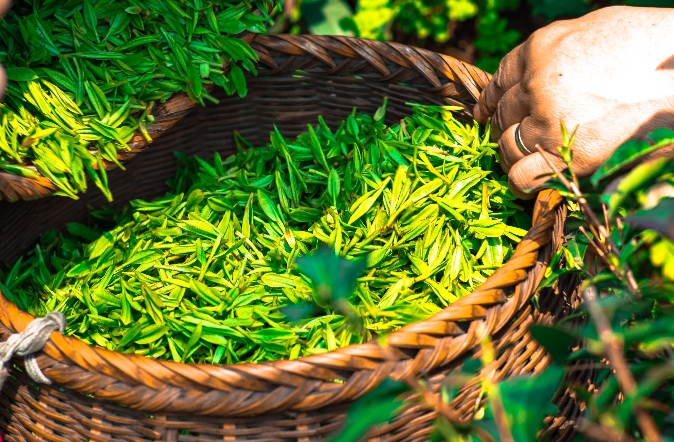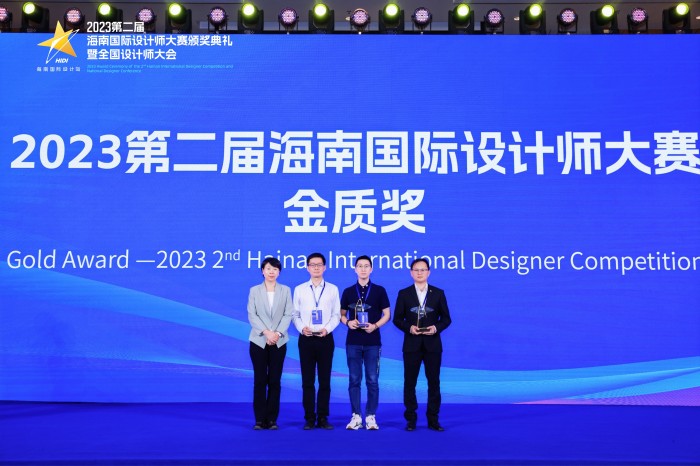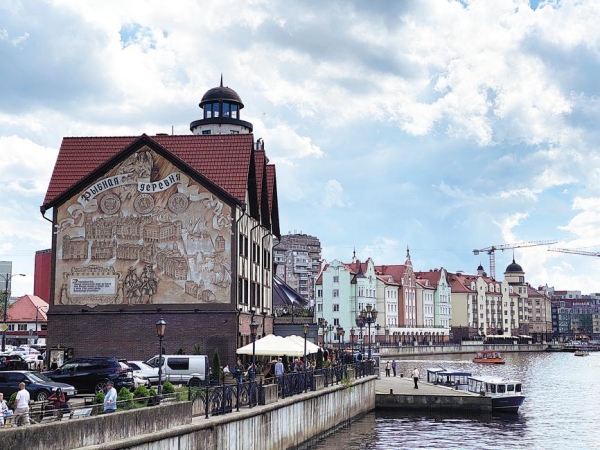
The Rybnaya Derevnya,or Fishing Village,in Kaliningrad attracts tourists with its reconstructed Germanic-style buildings and decent restaurants.[Photo by Ren Qi/China Daily]
The former capital of East Prussia,Kaliningrad is a unique Russian enclave that is closer to Prague or Vilnius than to Moscow.Its Gothic cathedral,cobbled streets and remains of Jugendstil architecture lurking behind the Soviet era concrete slabs tell a different story.
Such an unusual mixture of European and Russian culture and architecture,visible through numerous attractions,exists due to the city's history which includes the heritage of Prussia,Poland,the German Empire,the Soviet Union and modern Russia.
Before that,even,for many centuries it was the German province of East Prussia,colonized in the 12th century by Teutonic Knights;they built the city they named Konigsberg(King's Mountain),after Bohemian King Ottokar II who sponsored the conquest.
By 1283,the conquest of the Prussian lands had reached its final stage.It was during this time that the German colonists settled in the region.
Over the centuries,the indigenous Baltic inhabitants-the Old Prussians-became more Germanic,leaving few traces other than the region's now obsolete name.
The Teutonic Order built castles to establish power and control over the surrounding lands,and Konigsberg became home to one of these defensive fortifications,surviving three sieges by the Prussian army in 1260,1263 and 1273 and never being captured.
During the Seven Years War,in January 1758,the Russian army occupied Konigsberg.East Prussia remained part of the Russian Empire until 1762.The end of the 19th century is considered to be the peak of Konigsberg's prosperity.
The city sustained heavy damage during World War II after being bombed by Britain's Royal Air Force in August 1944.When World War II ended,Konigsberg and the northern part of East Prussia were transferred to the Soviet Union in accordance with the Potsdam Agreement.
The whole region was renamed after one of the Bolshevik revolutionaries,Mikhail Kalinin,the first Chairman of the Presidium of the Supreme Soviet of the Soviet Union,in 1946.While,in the 1990s,many Soviet-era city names commemorating Communist leaders were changed(e.g.Leningrad reverting to Saint Petersburg),Kaliningrad retains its pre-glasnost nomenclature.
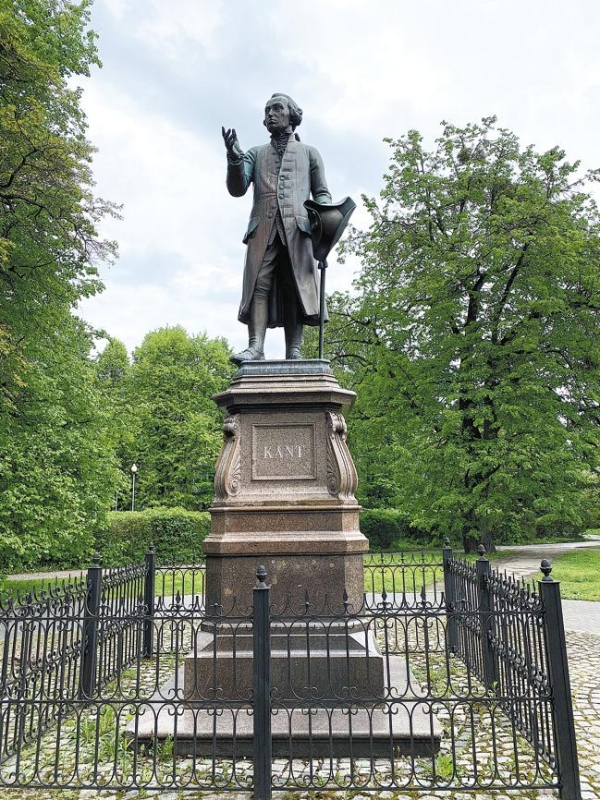
A statue of philosopher Immanuel Kant in Kaliningrad.[Photo by Ren Qi/China Daily]
If it's a fascination with political history that brings you here,visit Kaliningrad on May 9,when-together with the rest of Russia-it celebrates World War II victory with a massive parade along Leninsky Avenue.
The region is Russia's main military base in the Baltics and the home of the Baltic Fleet,and many locals hail from military families.
The captivating scene,best watched from the podium of the Mother Russia statue,which commemorates the inclusion of East Prussia into the Russian Federation in 1946,would have been hard to imagine in 1933 when Hitler was welcomed by the city authorities with a pompous celebration held in the very same place.
During Soviet times,Kaliningrad remained a closed territory for tourists due to the large number of military garrisons nearby.But still,a centuries-old German legacy shines through the outward Soviet facade.
As you enter the old residential suburbs of Amalienau and Maraunenhof,asphalt gives way to cobblestones,houses become quainter,and even the trees look better groomed than in the city center.
Spared by the war,these areas remain largely the same as they were at the beginning of the 20th century,albeit with different residents.If you've spent some time in Germany,you can easily imagine trams,shops and beer gardens populating the area.
Elsewhere in the city,the partially restored old forts are reminiscent of a time when it was run by knights who formed the monastic state of the Teutonic Order and imposed Christianity and the German language on local Baltic tribes with sword and fire.
The city's 12th-century cathedral,which lay in ruins for 50 years,underwent a careful German-funded reconstruction.The original tomb of the city's most famous resident,philosopher Immanuel Kant,can be found at the outer northeastern corner of the cathedral.
Kant is a cult figure in Kaliningrad-the local university bears the philosopher's name,and,here is a fascinating tidbit:"Kantgrad"was actually a serious suggestion when,back in the 1990s,the authorities pondered a change of the city's name.
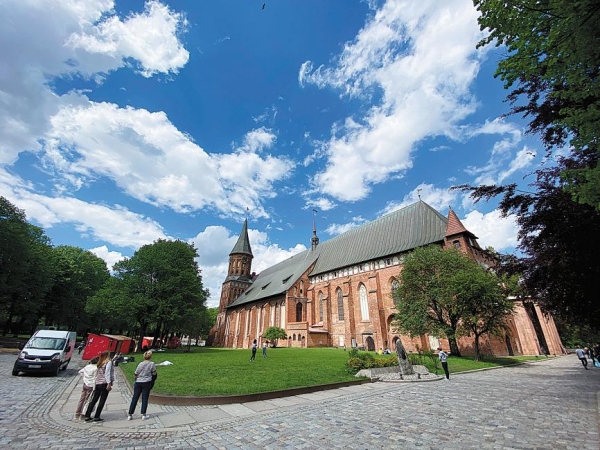
Konigsberg Cathedral is the most significant preserved building of the former city of Konigsberg.[Photo by Ren Qi/China Daily]
Another feature that gives the city a Berlin-like feel is the network of canals and footbridge locks near the cathedral.Facing the imposing gothic structure is a recent addition-a collection of vaguely Hanseatic-looking buildings collectively known as the Fishing Village.This is where some of the city's best restaurants and hotels are located.
In the city center,the German restaurant called,Tyotka Fischer,churns out all the German classics-a variety of sausages and the old local delicacy,Konigsberg Klopse(meatballs in creamy sauce with anchovies).Portions are unashamedly German,too-that is,sufficient to feed a family of three-and there is reasonably priced trademark Fischer beer on tap.
The famous Amber Museum is a must-visit for all tourists.This art depository was inaugurated in 1979,becoming Russia's first and only Amber Museum.Located in the center of Kaliningrad on the Verkhneye Lake shore,it is housed in a fortress tower dating from the mid-nineteenth century.
Amber is fossilized resin of ancient conifers that grew more than 40 million years ago on the territory south of the Scandinavian Peninsula and the adjoining part of the Baltic Sea bed.
The museum presents amber samples of different weight,color and clarity.There is the biggest"sunstone"in Russia,weighing in at 4.28 kilograms.A considerable part of the collection includes amber specimens with the inclusion of animals and plant remains that got stuck in the viscous liquid millions of years ago.
They are essential for our knowledge about the flora and fauna that lived in the region 40 to 45 million years ago.Today the collection of the Kaliningrad Amber Museum houses the main Russian national fund of Baltic amber.










